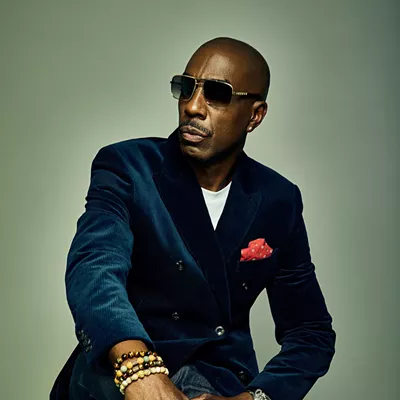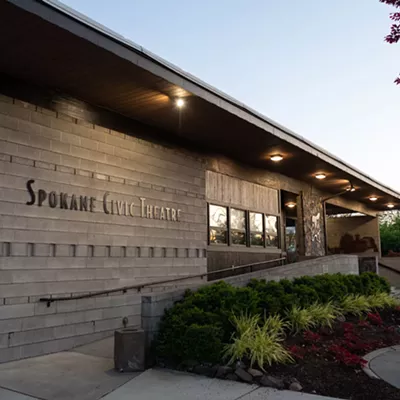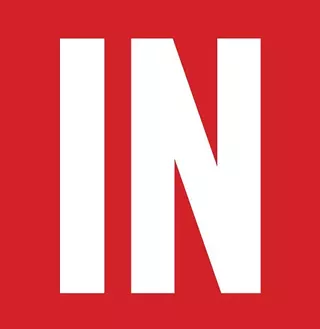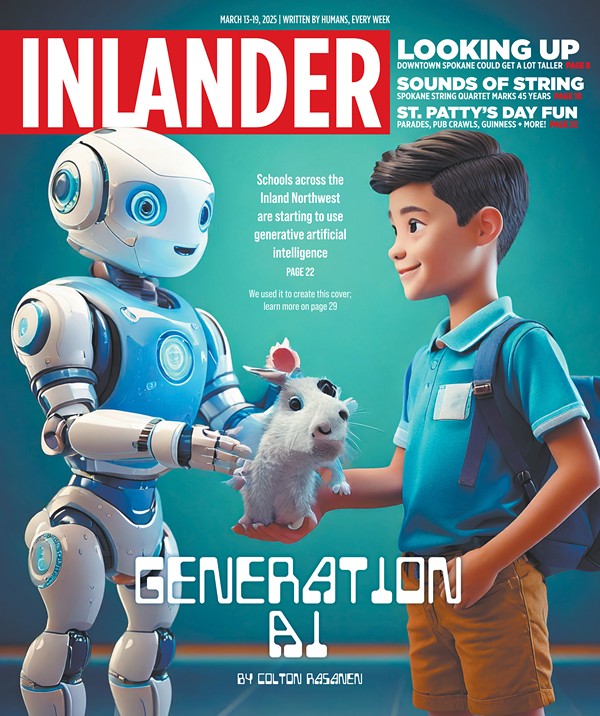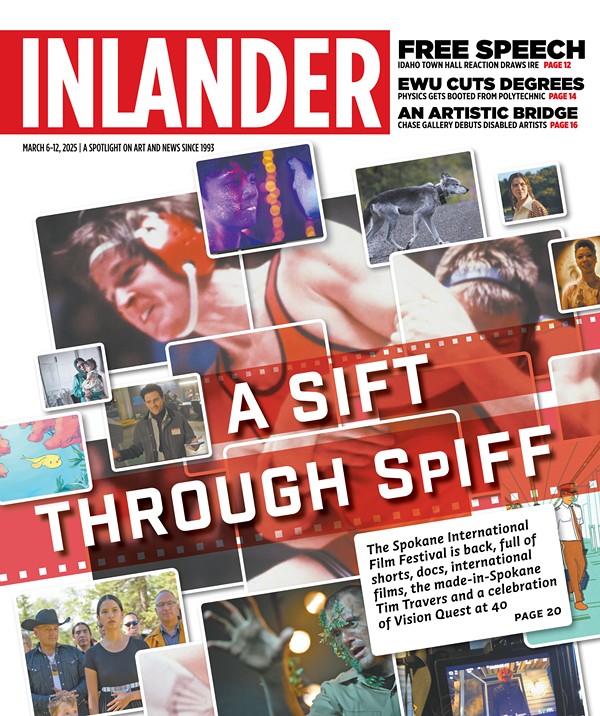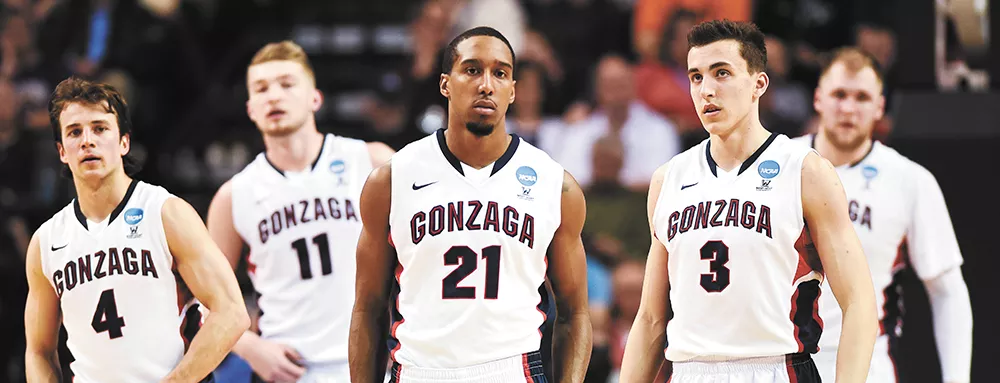
It's Sunday in Seattle and the afternoon service is underway outside KeyArena.
The preacher has a loudspeaker slung across his body and he's holding the microphone too close, so his fire and brimstone is delivered to his accidental congregation with ample distortion. He has one follower in the form of a young man holding a sign reading "Repent and believe," but nobody else is eager to sign up for the salvation he's selling. These folks seek something else, perhaps equally intangible, on this dreary afternoon.
"The glory of God is all around you, but you act like there's not a God! You want to worship Gonzaga! We've got a lot of people out here with their Gonzaga shirts on!" the self-styled preacher shouts. One of those people in Gonzaga gear stops and stares at his accuser.
"What good is that to you if they win today? We're talking about your eternal soul!" the crackly voice booms across the plaza.
The fan waves a flippant hand toward the source of indignation and joins the horde of well-heeled Gonzaga faithful arriving to face their destiny. And if an eternal soul is the cost of a victory against Iowa, well then, that may just be the price. Nothing else has worked. Not even a No. 1 seed a couple of seasons ago could bring them to the promised land of the Sweet 16. And now, their team equipped with the sort of weapons rarely seen together on one squad, let alone at a school of this size, it feels like it has to happen this time.
You cannot frighten these Gonzaga fans with threats of your street-corner view of hell, for they have seen something very real and very awful and, for all they know, it might be lurking on the floor of KeyArena. It's an NCAA tournament upset, and it will wreck your eternal soul and ruin a perfectly good weekend.
It's pouring rain in downtown Seattle, exactly what the people who flew in from Louisville or somewhere in Iowa or Orange County expected to find when they jetted across the country on short notice. It's dark, too, especially for the middle of a Friday afternoon in March.
It's appropriate, though, for the Wyoming and UC Irvine fans wandering around Seattle Center. By this point, both of their squads have already been bounced from the tournament. UCI lost to Louisville in a narrow, hard-fought game that couldn't even be saved by Mamadou N'Diaye, at 7-foot-6 the tallest player in college basketball and a man whose size your brain can't quite process when you see him in person. Wyoming, on the other hand, was soundly pummeled 71-54 by Northern Iowa earlier in the day, then went into a press conference and had to face the abrupt reality that its season was over. Cowboys senior Larry Nance, Jr. could barely choke out a response between tears as he sat at the podium.
"I've had the best four years," was all he could get out.
The Wyoming fans look almost as dismayed as they wander Mercer Street on the edge of Seattle Center. Their penchant for boots and facial hair makes you think they have what it takes to bounce back. At the entrance to an Irish-themed pub down the street from the arena, a dad and his son, both in Gonzaga hats, express condolences to a pair of Wyoming fans. The dad remembers when it was Gonzaga that was eliminted from the tournament — by Wyoming, in fact, back in 2002 — and can share the feeling. A sorry-for-your-loss seems the least you can provide to these basketball pilgrims who suddenly find themselves in an unfamiliar city with no more basketball to believe in.
But as tip-off for the later games approaches on Friday, Gonzaga apparel becomes ubiquitous and there's plenty of familiarity for Zag fans. Hats, scarves, sweatshirts, backpacks, buttons, necklaces — all of it emblazoned with navy blue and red and the Bulldog logo, and all of it just a sliver of the nearly $5 billion college apparel industry. If you didn't follow college basketball, you wonder where all these people came from, and how a school of less than 6,000 undergraduates has engendered this sort of following 250 miles away from campus.
It's still hard for guys like Scott Snider to process. These days, Snider is in sales for an HVAC outfit in Portland, but in the mid-1990s, he was the resident bruiser for Gonzaga, a guy his coach Dan Fitzgerald compared to the great Kurt Rambis, which is high praise for a certain subset of player. Snider is easy to spot at the Irish bar. He's still every bit of 6-foot-9 and is decked out in an authentically retro Gonzaga baseball jersey.
"In 2001, I'd go to a game and maybe recognize half the people there. Now, I'd probably recognize a fraction of that," says Snider, sharing beers with friends about two hours before the Zags tipped off.
"In some ways, it's a 180 from what I remember, but it's all good things," he says.
It's an older crowd in the Irish pub, and no one seems shy to share their Gonzaga memories. A couple of founding members of the Kennel Club are seated in a booth. They're part of a group of 10 original members who've made the games in Seattle a reunion, and they've made "Kennel Club Founder" T-shirts for the occasion. One of them, Mike Shields, tells stories of house parties and face paint and teams that weren't really that good. Things, he says, have come a very, very long way.
Their signs say they're looking to buy your extra tickets, but they can sell you some, too. That's good for them, because it's a seller's market at the NCAA tournament in Seattle, where tickets have long been sold out, unless you could get in on seats allocated to your school. There were plenty of online options to put down a month's mortgage for premium seats, but on game day, you're going to have to go analog.
The scalpers surround the arena and they can smell a mark from half a mile away.
"You selling tickets?" they'll ask. And when you say no, they whisper to see if you need tickets.
Approaching halftime of the Iowa vs. Davidson predecessor to the Gonzaga-North Dakota State game, prices are still steep, but there's some wiggle room.
"Best I can do is $175 for these," a guy in a Seahawks hat and shoulder-length dreads says regarding tickets he said were about halfway up the lower level.
"You just wanna get in the door? I got a couple singles, I'd do $125 for each of those," he said, showing upper-level seats emblazoned with a $66 face value.
No matter how many great moments the NCAA tournament gives us on the court, it's hard to ignore the money. It's both hidden and everywhere at the same time. There's the roughly $700 million TV contract, and again the apparel, and then the sponsorships that are all but plastered onto the eyeballs of viewers, even those in the arena.
Meanwhile, there's Gary Bell, Jr., who has the grand fortune of playing NCAA tournament games just minutes from home (Bell grew up in Kent, south of Seattle) during his senior year, yet doesn't see legions of friends and family in the stands due to the prohibitive cost of entry. Players get two tickets each to give out, but everyone else is on their own.
"My mom and dad will make it to the games, but nobody else, though. The tickets are really expensive," Bell told the Inlander on Selection Sunday.
Inside the arena, as the Gonzaga faithful get to their seats in time to see enough of Iowa's 31-point annihilation of Davidson to fear the Hawkeyes, there's a notable absence. While Gonzaga plays its home games to 1,200 students uniformly dressed and standing en masse for the entire length of the court, the scene at the NCAA tournament is much different.
There are some GU kids here, but no rollicking student section, and you'd need binoculars to find them up near the rafters. A Gonzaga senior says they only got 50 tickets, so it's a small but vocal crew they're working with here in Seattle.
Needless to say, there's no "Zombie Nation" dance/chant, the hallmark of the Kennel Club, to be found in the minutes prior to Gonzaga's tip-off with North Dakota State, and that's a damn shame. College basketball is a hell of a lot more fun when you put a thousand or so 21-year-olds who value loyalty over inhibition right next to the court.
He looks like he's just finished dropping the transmission out of somebody's farm truck when someone handed him a green-and-yellow jersey. More plausibly, perhaps he's a reserve tight end on North Dakota State's juggernaut of a football team, and first-year head coach David Richman thought he might be able to warm an empty seat on the bench.
But apparently Dexter Werner is a real basketball player, capable of coming off the bench and scoring 22 points against Gonzaga's big men, who are among the best in the country. With each playground-speed spin move and miraculous heave at the basket, Werner gained the sort of weird confidence that's been known to take over players in the NCAA tournament and can generate the winds of upset.
"I trip on a guy's foot and fade away and bank it in. You know, sometimes you got to keep it going. I took some looks I probably wouldn't regularly take, but I was hitting, so... " he says after the game, looking appropriately exhausted.
It was enough to make you forget that for most of this guy's confounding outpouring of scoring, the Zags were up by 10 points or so. Gonzaga never let the game get away from them, even if the heartburn suffered by their more cautious fans said otherwise. In fact, the Zags were playing like a No. 2 seed. Kyle Wiltjer was playing a personal game of H-O-R-S-E, finishing with 23 points. Kevin Pangos allowed himself some selfishness with the ball and hit four three-pointers on the way to 18 points, while Domantas Sabonis plucked 11 rebounds in just 23 minutes on the floor.
A final score of 86-76 probably didn't look impressive as it scrolled across the SportsCenter ticker, but the notion of surviving and advancing is very real. Still, waiting in line at a self-described dive bar that prides itself on being a Gonzaga-supporting establishment just blocks from the arena, an alum complained to his wife that the Zags could have played better. He was nervous, he said, about playing Iowa on Sunday. There was the curse of the Round of 32 on his mind, and for some reason he couldn't savor the victory. Not until they got out of Seattle alive.
It's Sunday, two hours to tip-off at that same dive bar. It's packed, but there's a stillness to the place. It's a bar, of course, so people are drinking and smiling and wearing Kennel Club shirts from every year since the Clinton administration, but a thick pall of nervousness is apparent.
If you add a guy on a megaphone telling you that you're going to hell because of basketball as you head into the game, well, those nerves aren't likely to settle. Even among the media, there's a sort of inquisitive quiet before the game, but that might just be the weekend's cumulative hangover taking effect on the reporters representing every national, regional and local newspaper, blog, radio station and homeowner's association newsletter within a day's drive. But people seem to be genuinely curious to see if the Zags, with their most talented roster to date, could get past the Round of 32 and prove the they-never-do-much-in-March naysayers wrong.
It wasn't long after tip-off that the curse, and in turn Iowa, started taking a beating. Wiltjer nailed a three, then Pangos, and KeyArena was as loud as it's been since Macklemore last played the joint. Gonzaga never trailed in the game, and Iowa's size had no visible effect. Wiltjer didn't even miss a shot until there was eight minutes and change left in the game. The Zags' shooting stats bordered upon basketball pornography, and including them here would sully the family-friendly reputation of this publication.
When Mark Few pulled his seniors out of the game, a roar accompanied the hugs Pangos received from his teammates and coaches. The whole thing was a "goosebumps" sort of moment that made you think maybe all of this was worth a couple hundred bucks to see. Just maybe.
The final horn signals an 87-68 final and the burial of a monkey that had somehow lived on the backs of Gonzaga's program for five years. They go to the locker room and do the sort of thing 18-to-22-year-olds do. For Eric McClellan, that's a backflip. Then Few does the sort of thing that 52-year-olds do, which apparently is a handstand-meets-cartwheel.
Minutes later, Few, Wiltjer, Sabonis and Pangos take to the press podium, straight-faced and stoic to a man. It's a few questions in when someone mentions the Curse of 32 without calling it a curse, because that would be unprofessional. Few mostly masks his annoyance with the question. He doesn't get why no other team is held to that sort of standard, even if they manage the impressive feat of winning a game in the NCAA tournament for seven years in a row.
"At the end of the day, this is about two things: It's about staying involved in the greatest sporting event in the world. You want to stay in it for as long as you possibly can, because it's so much fun, it's so exciting," he says. "But the second part of it is, I mean, this team loves each other. ... You want that season to last as long as possible. So, we just gained another week right here, and hopefully we can gain one after that."
On the arena's concourse, Gonzaga fans mill about in an adrenaline-depleted haze, perhaps unsure if they want to stay for the nightcap between Louisville and Northern Iowa or celebrate elsewhere or maybe start looking for flights to Houston.
Outside, the preacher, and his righteous judgments of basketball fans, is nowhere to be found. In his stead is a tent occupied by attractive young people handing out cans of Coke Zero, needed fuel for the trip back to Spokane, the rightful home of Gonzaga basketball and a refuge, at least for a few days, from the noise and blinding strobe lights of the greatest sporting event on earth.
The curse, though, stays here, right where it died. ♦
When the Zags and the Bruins tip off Friday in the South Regional, it'll match two of the West Coast's best. But for Zags fans, there's still that nagging wound from 2006. Sure, the Zags beat UCLA convincingly down in Westwood in December but the memory of losing a spot in the Elite Eight, with Adam Morrison and a 17-point lead, is still raw.
The Bruins are an unlikely opponent, as few bracketologists thought they'd even get into this tournament. An iffy goaltending call beat SMU; then, against an interior-defenseless UAB on Saturday, they were a much different team than the one that only mustered seven first-half points against Kentucky early in the season.
Gonzaga, meanwhile, gave opponents something new to worry about, as Kevin Pangos dusted off his still-deadly three-point shot, with eight bull's-eyes in Seattle. The venue could play a role Friday: NRG Stadium, where the NFL's Houston Texans play, is huge and cavernous and arenas aren't usually a shooter's friend, but Kyle Wiltjer has seen this rodeo with Kentucky as a freshman.
The Zags need to handle UCLA's Tony Parker, who is huge at 6-foot-9 and 260 pounds — well, in most games he's huge, but Przemek Karnowski has him by four inches and 30 pounds. Coach's son Bryce Alford can kill you if you let him run free; he lit up SMU with nine three-pointers. On Friday, shutting him down will be defensive specialist Gary Bell's personal mission. (TED S. McGREGOR JR.)
Perennial powerhouse Duke is no stranger to the late rounds of March Madness; the Blue Devils, led by legendary coach Mike Krzyzewski, are going for their fifth national title under his regime and are viewed as one of the few threats to tourney favorite Kentucky. In Jahlil Okafor, Duke has the best freshman in the country, and possibly the college Player of the Year; he scored 26 almost effortless points against San Diego State on Sunday.
Utah's run to the Sweet 16 was perhaps less expected — the result of a massive rebuilding project for a team that was among the nation's worst three seasons ago. Credit for that goes to the Utes' own Coach K, Larry Krystkowiak, who local fans might remember from his years playing and coaching the University of Montana. Over the weekend in Portland, Utah took down everybody's favorite Cinderella pick, Stephen F. Austin, and then East Coast hoops icon Georgetown.
Like Duke, Utah has a star freshman center in Jakob Poeltl (rhymes with "turtle"), but the team leader is NBA-caliber point guard Delon Wright, who will have to play the game of his life — along with the rest of the Utes — to hang with the Blue Devils. Duke is the better rebounding squad; Utah plays stingier defense. Both teams can bomb threes. (DAN NAILEN)










